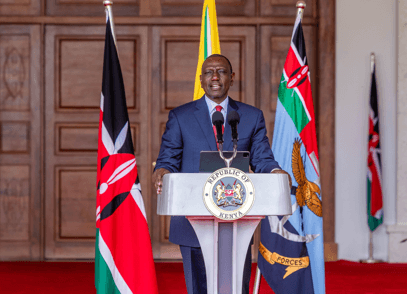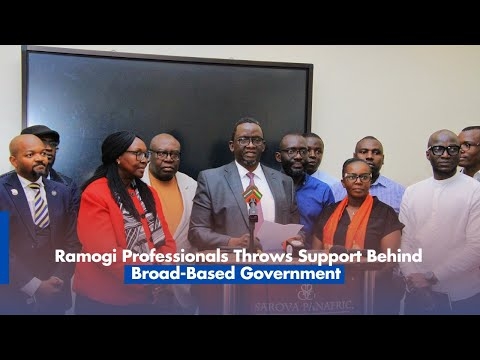Curious about why, despite the post-2010 electoral reforms, many Kenyans continue to decry their country’s electoral governance, I partly dedicated my doctoral research to clarifying how Kenya’s electoral governance institutions actually work.
My focus was election management and electoral dispute settlement from 2002 to 2017.
I conducted fieldwork in Nairobi and Nyamira counties.
My information sources are present and past employees of the former Electoral Commission of Kenya, the Independent Electoral and Boundaries Commission, courts and these institutions’ partner organisations.
I carried out one-on-one and group interviews, observed events and people, and analysed social and traditional media, scholarly and organisational materials.
This article discusses some key findings to highlight lessons likely to benefit future electoral governance.
It maintains that forces within and outside of the institutions combine in diverse ways to produce complex combinations of successful and unsuccessful election and petition outputs.
TRANSFORMING INSTITUTIONS
Electoral governance institutions have experienced significant modifications after the 2010 constitutional change.
The IEBC replaced the ECK in the aftermath of the 2007-08 post-election violence and conducted the 2013 and 2017 general elections.
Under the old Constitution, a High Court would have resolved presidential election petitions, but the new Supreme Court adjudicated petitions associated with the 2013 and 2014 elections.
New legal safeguards are intended to enhance the capacity and independence of the reformed institutions.
INFLUENCES ON ELECTORAL GOVERNANCE
I found that factors within and outside the IEBC and courts merge to complicate their work.
Many interviewees noted that despite measures to curtail executive government interference in electoral governance, executive power over the appointment, dismissal, and/or financing of the institutions means the practice continues.
The period since 2010 has seen the closure of many direct avenues for executive interference, yet executive influence has not disappeared.
While the Constitution has stimulated the financial independence of the Judiciary, former Chief Justice avid Maraga lamented the reduced 2017-2019 Judiciary budget, alleging that "‘other arms of government" sought to make "the Judiciary…a puppet’.
The backdrop includes President Uhuru Kenyatta’s threat to "fix" the judiciary, which he angrily accused of being run by ‘crooks’ who nullified his 2017 re-election.
Reduced funds can constrain the hiring of personnel, procurement of materials and refurbishment of courts.
True, the Constitution’s provisions have considerably diminished the president’s say in the appointment of judicial officers.
But many electoral officials stressed that — though the reform sought to block the manipulation of appointment of electoral commissioners — the multi-party vetting of prospective commissioners sustained this practice, allowing the executive and opposition to push their sympathisers into the IEBC.
A member of the vetting committee recounted how he witnessed "people from ODM and Jubilee…giving high marks…to interviewees/applicants they preferred".
To him, aspiring commissioners "were seeking the political support…needed to go through that process".
This confirms the open secret that the 2017 IEBC was internally fragmented along partisan lines.
This possibly undermined the fairness and efficiency of the institution.
My research also spotlights other external agencies that influence electoral governance but receive less attention: legislators, donors, political elites, and party supporters.
Through mechanisms like financial and technical assistance, appointment of institutional heads, and/or threats of violence to officials and work, these actors shape performance negatively and positively.
Reports like the Judiciary's 2015 'Judiciary Working Committee on Election Preparations' show that donor agencies like the International Development Law Organisation helped hire and pay the Judiciary’s legal researchers and interns and take 22 judicial personnel on benchmarking trips to countries like Ghana, South Africa, and Mexico.
Despite their inconsistent degrees of efficacy, these interventions generally enabled the institution to cope with budget cuts and facilitated the timely completion of petitions in 2013 and 2017.
Officials of the International Commission for Jurists – Kenya, the judiciary’s strategic partner, happily mentioned the stimulated independence and fairness of the reformed Judiciary.
Nonetheless, they worriedly conceded that the shooting of the Deputy Chief Justice’s bodyguard ahead of the petition to stop the repeat 2017 presidential election eroded the independence of the Supreme Court, which failed to raise a quorum for the case.
I also noticed how perceived and actual violence similarly drive some county-level electoral officials to succumb to pressures from politicians and their supporters. While this threat is ubiquitous, it is more severe in Nairobi than in Nyamira.
The evidence suggests that, contrary to popular perception, whereas some public institutions serve partisan and personal preferences, others function as mandated.
The variability of the quality of election and judicial decisions is partly attributable to this.
I additionally explored how structures, norms, and processes inherent in institutions affect electoral governance.
They include logistical arrangements, workload, deadlines, recruitment practices, employee (dis-)unity, and material resource availability and deployment.
Nearly all IEBC personnel pointed to fatigue-induced errors from intense pressure from the six elections they administer in one day.
Election observation reports stressed the prevalence of such errors even when the ECK administered only three elections.
Certain judicial personnel equally conceded that the new deadlines for deciding petitions and their inadequate preparation for adjudicating an unprecedentedly high number of petitions in 2013 caused some judicial officers to use technical reasons, not the merit of cases, to dismiss some petitions.
This enabled judicial officers to meet deadlines, but at the expense of justice.
Corrupt officers might have deliberately used technicalities to protect their preferred candidates, as witnessed in the 1992 and 1997 electoral periods.
The 2013 experience helped the Judiciary to better cope with its demanding workload and deadlines in 2017, when more petitions were adjudicated on substantive, rather than procedural, grounds.
MOVING FORWARD
The fusion of forces within and outside of Kenya’s election management bodies and electoral courts yields electoral and election petition processes and outcomes that are not wholly (in-)effective, (in-)efficient and (un-)fair.
The work of these institutions differs across and within electoral cycles, institutions and areas.
Lessons include: First, contextual variations in electoral governance processes and outcomes show that no institution produces (im-)perfect outputs.
This research calls for complementing general reforms with context-specific ones. These should target specific institutions and their individual departments and county- and national-level offices.
Second, contemporary reform approaches, which often fixate on official structures, rules, and procedures, are necessary but not sufficient.
Official and unofficial mechanisms are not innately benign or pernicious.
They can play any of these roles in any given context, thereby complicating electoral and electoral dispute resolution processes and results.
It is not surprising that most IEBC interviewees recommended ‘staggering of elections’.
This would require constitutional change. The International Development Law Organisation's contributions, which are not institutionalised in electoral laws, illustrate the utility of some unofficial arrangements.
Policy makers and practitioners need to critically interrogate official and unofficial structures, norms and procedures to exploit performance-enhancing ones.
Third, electoral and judicial personnel sometimes exercise power to regulate effects of the explanatory factors mentioned.
The data unveils how - compared to the IEBC employees - judicial officials have been much better at resisting executive interference.
This manifests in the generally dissimilar abilities of both institutions to stay above partisan leanings.
The lesson here is that addressing the so-called determinants is important but it should be done along with the staffing of the various levels of the IEBC and courts with persons committed to institutional ends.
Competency-based recruitment (more common in the judiciary), rather than partisanship-based recruitment (more common in IEBC), policies and practices targets headquarters-level and county-level staffing. Cross-institutional learning can facilitate this.
Fourth, qualitative research should be undertaken for an in-depth understanding of the everyday experiences of top-, middle-, and lower-level electoral and judicial personnel.
This will uncover the enablers and impediments to performance as well as the solutions to challenges confronting institutions.
The research should be sensitive to time and space. A case in point is how lessons from electoral dispute resolution in 2013 helped improve the Judiciary’s capacity in 2017.
This means officials’ realities may change with time. Hence, institutions need to consistently endeavour to learn from the present and past experiences of employees at all levels at any given moment.
The author is a Ghanaian who researched the nexus between electoral governance and public opinion formation in Kenya for his doctoral studies at the Centre of African Studies, The University of Edinburgh.
(Edited by V. Graham)













